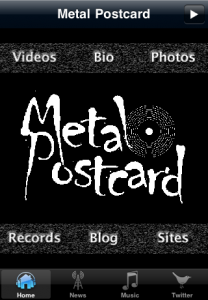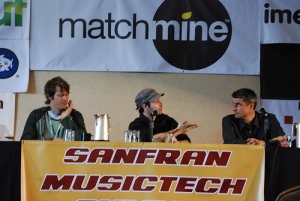
We’re happy to announce that IRIS Distribution, the digital music distribution and marketing company that represents many of the world’s leading independent record labels, has partnered with MobBase to provide affordable and cutting-edge iPhone applications to its labels and their artists. MobBase is the new service that makes it easy for musicians and record labels to create an iPhone app.
“IRIS is always looking for new ways to help our labels get music in the hands of fans, and to enable artists to build audiences and careers,” said Bryn Boughton, chief marketing officer. “Mobile applications are quickly becoming a ‘must have’ part of the label and musician tool kit, and MobBase provides one of the best, fastest and most inexpensive ways for our labels to create a custom iPhone application.”
MobBase, a service of MixMatchMusic, is a low cost way for musicians to share music, photos, videos, tweets, news, information about shows, merchandise and other content with fans on their mobile devices.
“IRIS presents labels and their artists with a fantastic array of tools and services to help them connect with fans,” said Charles Feinn, CEO and co-founder of MixMatchMusic, MobBase’s developer. “A custom MobBase iPhone app is a perfect complement to these tools and services – it will help labels promote their acts and help artists engage fans and ultimately, get their music heard and tickets to their shows sold.”
Mobile music marketing
MobBase gives artists a mobile, interactive fan club, storefront, merchandise table, and more. The MobBase application is highly customizable, so artists can pick and choose the content they offer to fans and also the way that content is presented.
A custom iPhone app for as little as 50 cents a day
MobBase is priced to be accessible to any artist. It costs just $20 to get going and many artists will never pay more than $15 a month to deliver music, photos, videos, tweets, info about gigs, merch and more to hundreds of fans.
About IRIS Distribution
Founded in 2003, IRIS is the only remaining independent digital distribution company in the US. The company operates a wholly owned branded entertainment and music marketing agency, BlinkerActive. IRIS boasts a strong roster of leading independent labels from all genres and distributes to over 450 digital outlets in 85 territories around the world. Distribution and marketing clients include Ninja Tune, kranky, K Records, Palmetto, Scion A/V, CMH, BYO, Surfdog, Chemikal Underground, Metropolis, EMI, Projekt and more. The company is based in San Francisco and New York City.







